"Drachenfels"
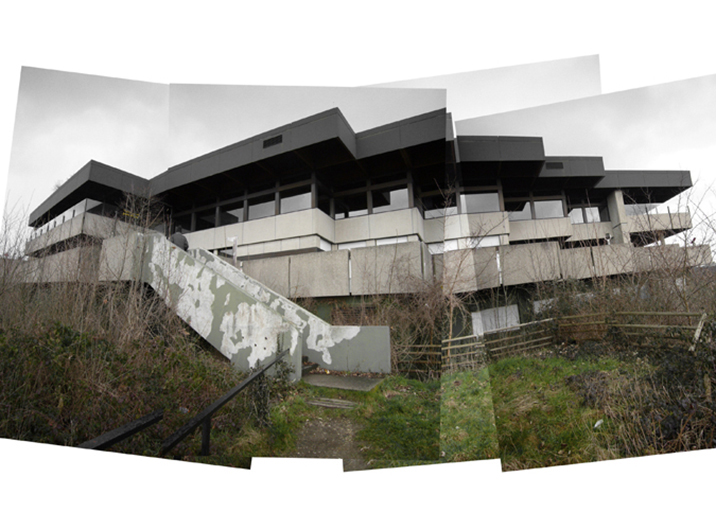
Drachenfels
Hotel and restaurant
Final thesis, 2007, Königswinter / Rhine, Germany
I worked on the project: 2007
Final thesis: This is my final project / Diploma at Bauhaus-University in Weimar, Germany. It was rated 1.4 („Very good“) on a scale from 1 to 6.
The Drachenfels is a 321m high mountain within the Siebengebirge (Seven Mountains), south of Bonn, Germany. It is not the highest, but due to its location directly on the Rhine and its cragged rock it is the most prominent of the peaks of the Siebengebirge. Nearly 2.5 million visitors, 60% of which are German, come to see the mountain each year.
On its peak stands the ruin of castle Drachenfels, which between its completion in 1146 and its demolition during the Thirty Years’ War in 1634 was used by Cologne’s archbishops for securing their realm. Stone quarries that were operated for centuries on the rock below were in fact the main cause for large parts of the castle to break off.
Rhine romanticism in the 19th century prevented the final demolition of the castle and put a stop to the operation of the quarries. Mountain and castle slowly become a romanticized tourist destination; in 1883, Germany’s first cog railway to the peak opened. In 1832 a first guesthouse was built, then later on, a hotel. After many extensions and modifications a much larger restaurant was erected in the 1970s and the hotel shut down. Mountain and castle slowly become a romanticized tourist destination; in 1883, Germany’s first cog railway to the peak opened. In 1832 a first guesthouse was built, then later on, a hotel. After many extensions and modifications a much larger restaurant was erected in the 1970s and the hotel shut down.
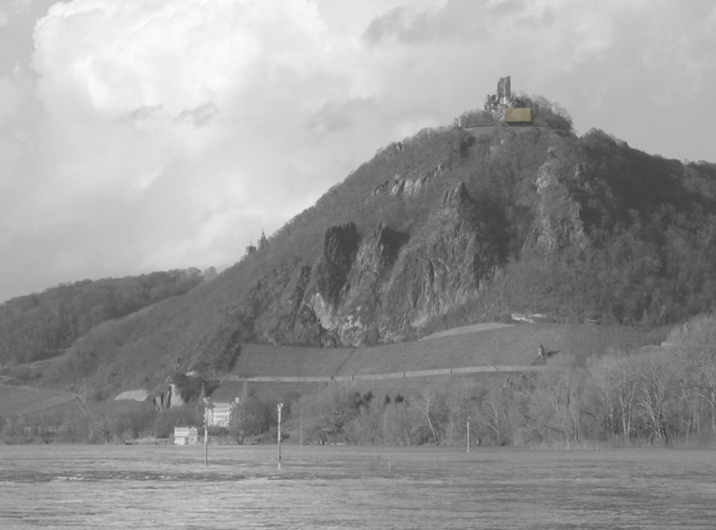
Castle and plateau
Each of the four ways to the ruin leads over a natural plateau with the 1970s restaurant a little below the peak. The current unsatisfactory mass-tourism-based design of the restaurant and plateau is along with the path system to be extensively improved. Furthermore, the reopening of the hotel is aspired.
The restaurant from the 1970s will be replaced by a new structure of reduced dimensions. With its noble, shimmering black-gold shell and its clear geometric form, the new building underlines the specialty of the place and sets the quality benchmark in its distant effect.
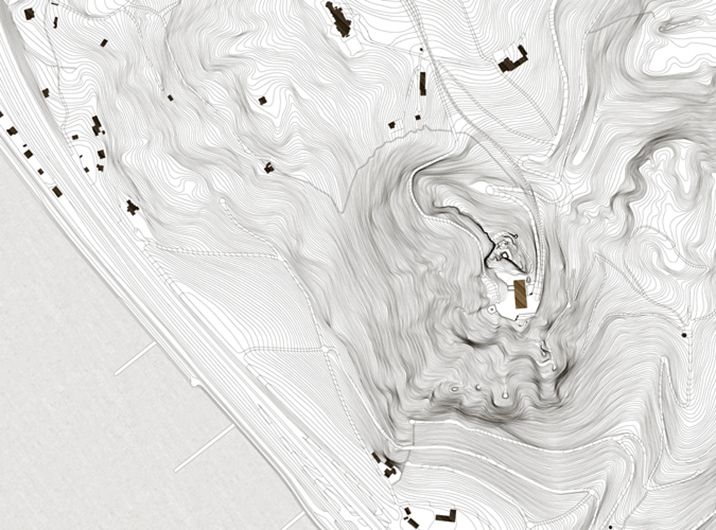
Situation
The building is moved away from the border of the plateau to its center, for at this place it disturbs the flow of visitors minimally and can fulfill at the same time a connecting function between the different parts of the plateau. The circular direction of the visitors’ flow along the borders of the plateau will not be disrupted; the excellent view can be newly enjoyed from nearly all parts of the plateau.
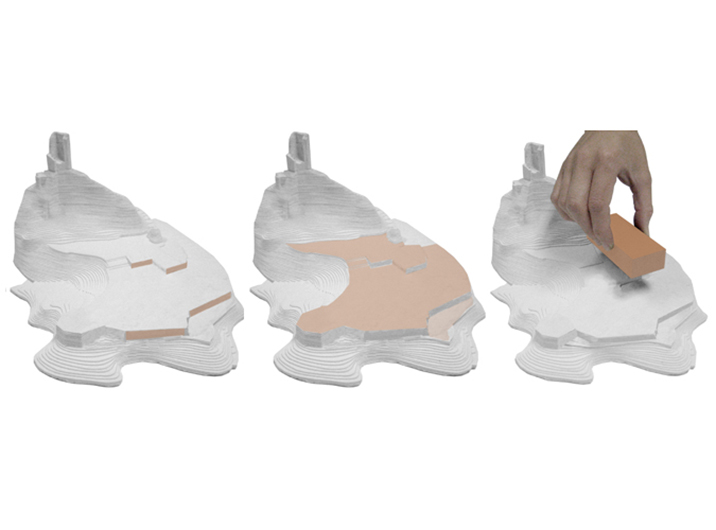
Trisection of the functions
The visitors’ plateau on the Drachenfels partly stretches out directly over rock, and partly over existing structures from the 19th century that have been built into hollows left over by the quarries. For this reason it has always been partly a structure and partly nature. In the course of time, the plateau’s borders have been remodelled and reshaped repeatedly.
This specialty is used for the reorganization of the plateau and the new construction of the hotel. Both different forms of tourism, the (few by numbers) hotel guests and the numerous day tourists have to function commonly without influencing each other negatively. Closed-up places are not to be generated.
For those reasons the hotel is displaced to a level above and a level below the plateau. The intimate hotel functions as a “hovering” structure, the semi-public functions as a high quality restaurant and the spa area retreat into the mountain – into the “pockets” of the plateau’s borders. In between lies the open ground floor, the flowing surface, a communicative between-space that can belong to the exterior or interior space depending on how you look at it.
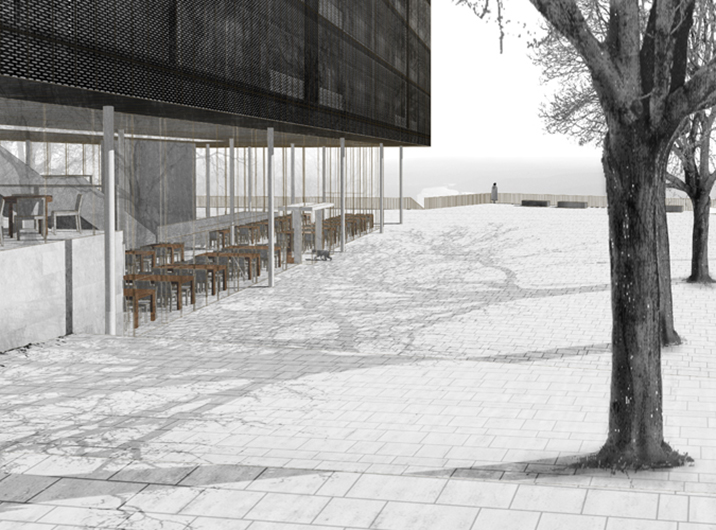
Visitors’ plateau and restaurant
The different levels of the visitors’ plateau meet within the building and connect interior and exterior space.
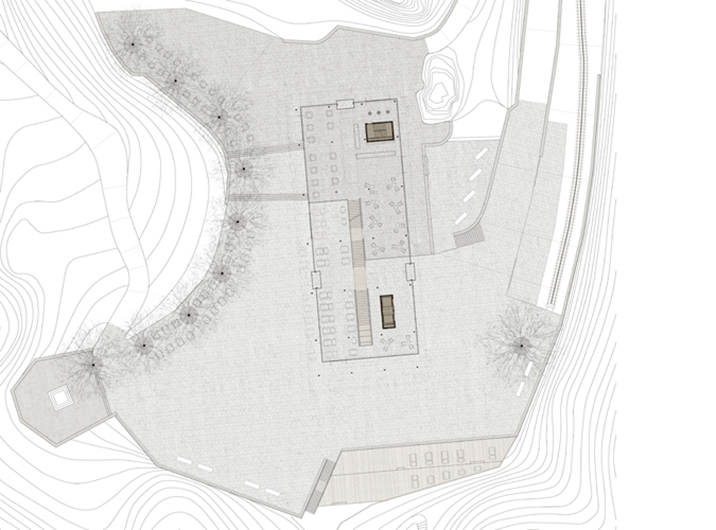
Surface
The plateau’s surface flows through the building – there is no special main entrance. Through a glass facade with maximum possibility for opening a high level of permeability is created on all sides of the building. Three entrances with wind collectors secure access at multiple places also in winter.
The space between is characterized by the movement of the floor relief and the tranquillity of the structure hovering over it. In this area it comes to an intersection of hotel functions and those for day tourists. The separation between the two user groups of day and night tourists will happen alone through the use at different times of day.
The different levels of the visitors’ plateau meet here: on the lower (slightly brighter) level towards the mountain station of the cog railway you will find the hotel entrance with elevator- and waiting area, on the left side is the self-service restaurant. The hotel reception and the free-flow area are hidden in the borders of the plateau. Situated on the higher (slightly darker) level are a bistro and a lounge area with a bar and souvenir shop.
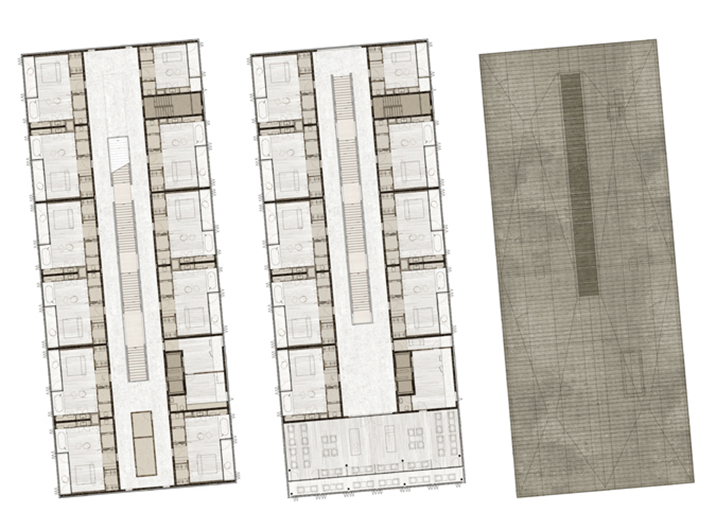
The hovering body
The guestroom area extends over three upper floors, with a drawing room on the third floor. In this room with its three-sided view, breakfast is served in the morning. The guestrooms at the facade are lined-up along a central corridor and take maximum profit from the view, according to their position towards the lower Rhine or the Seven Mountains.
The black-golden shell encloses all six faces of the body. Different set-offs of the layer behind constitute a voluminous exterior wall. Through a gradation of the degree of openings in the shell, the necessary intimacy towards the exterior in the more sensitive parts is reached – from fully closed on the southern and northern side and perforated in front of the windows, to completely open in front of the guest rooms by means of folding-and-shifting shutters.
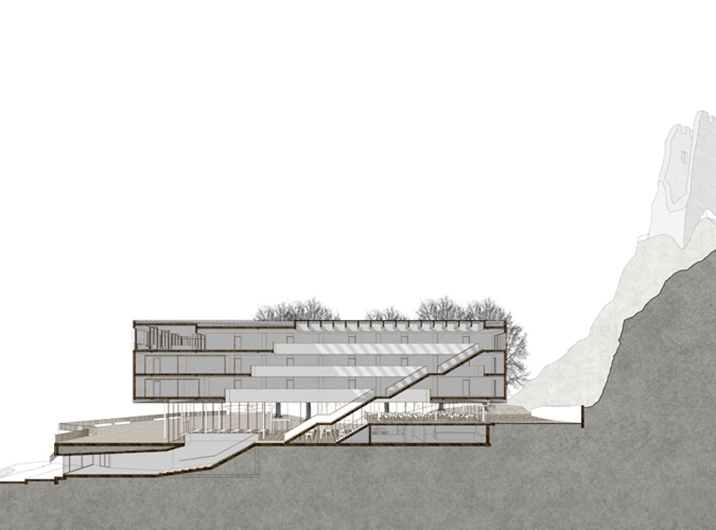
Cascade staircase
The cascade staircase running through all three areas holds together the different parts of the hotel and brings a certain intimacy with itself. The space of the staircase with its starting and ending points each in one of the hotel functions runs from the bottom to the top part of the building. The cascade form with its accesses from the sides in the intermediate stories gives to the staircase a kind of seclusiveness. The stairwell is oriented towards a long rooflight.
In the lower floor the staircase slows down. The stairwell alters from a high and narrow space within the hovering body to a low and wide space in the mountain. The corridor ends with a view on the southern Rhine.
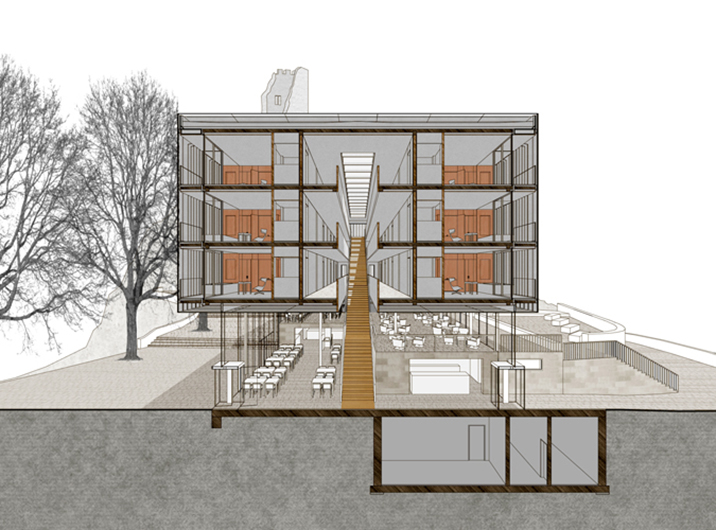
Cross section
with hotel entrance and reception.
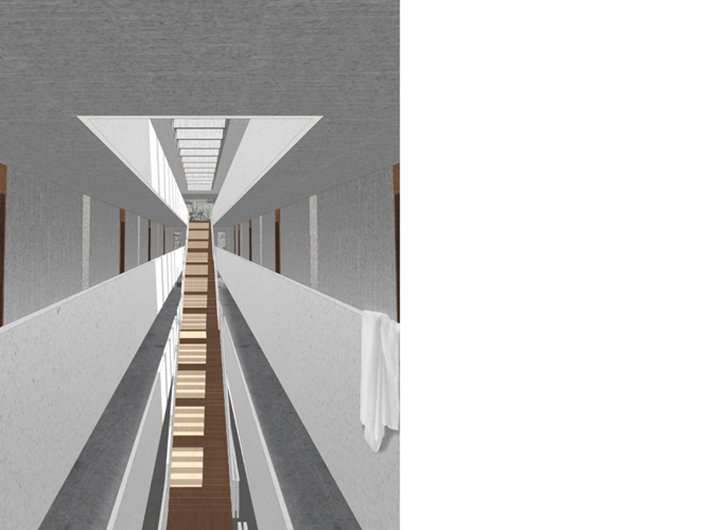
Stairwell
of the cascade staircase with closed balustrade for a higher degree of seclusion.
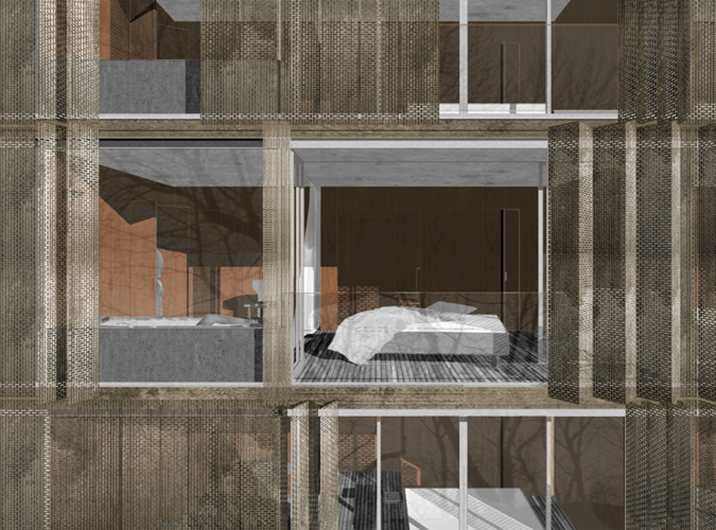
Guestrooms
with loggia and bathroom located at the facade. A circumferential voluminous wall cladding directs the orientation towards the view.
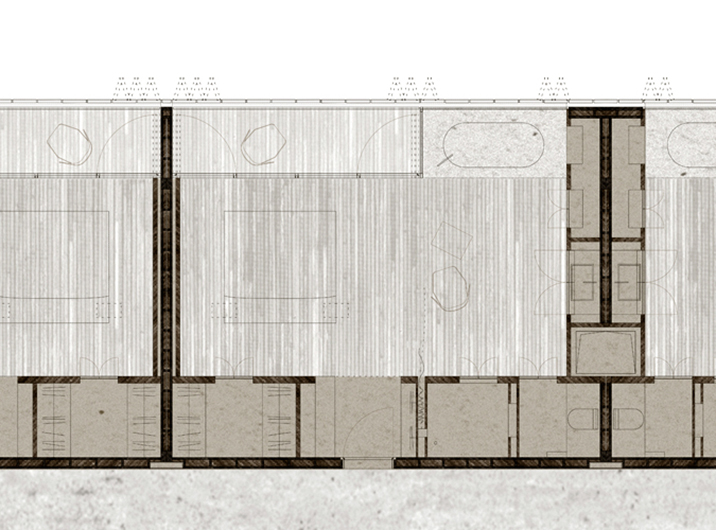
Guestrooms
The rooms lie with their long side towards the facade and enjoy excellent views over the Rhine Valley or towards the mountains. The fourth wall of the room has been dissolved into a voluminous intermediate layer with room-high glazing. This layer is shared by the loggia and the embedded bathtub and stages the transition from interior to exterior in a special way.
A guest entering the room will immediately note the mergence of guestroom and bathroom by the free-standing bathtub. All other bathroom objects (shower, WC, washbowl) as well as a walk-in wall closet and shelves are hidden in the voluminous wall-cladding. The unification of the two most important activities in a hotel room, personal hygiene and sleep, leads to a new recreative stay between bed and bathtub. For screening purposes, the room can be divided by a room-high curtain.
All remaining furniture is, now that everything is stowed in the walls, actually mobile. The bed has wheels to help move it out into the loggia if wanted, the armchair and table are light enough to carry around.
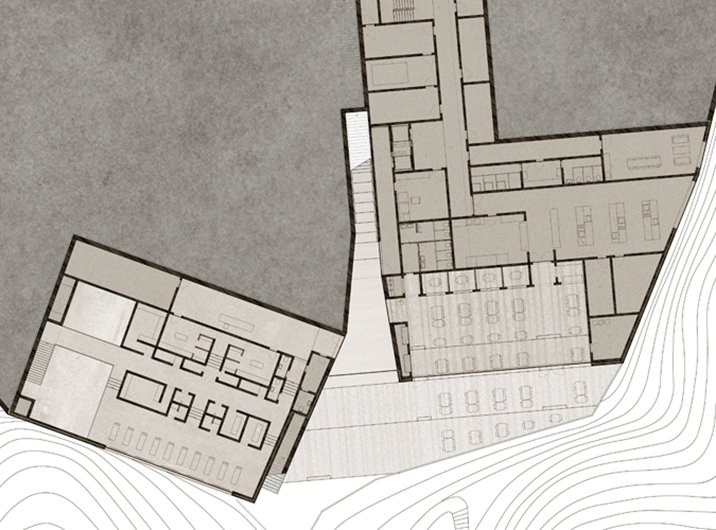
In the mountain
Since a year-round operation independent of seasons is only possible with additional functions, a high quality restaurant and spa area are accommodated in the basement. Both semi-public functions can also be used by guests from the outside.
The restaurant is set back from the border of the plateau to leave space for a terrace. By small differences of the floor levels the room is stepped towards the exterior, resulting in a very good view for each of the tables.
The spa area constitutes a succession of steam and water rooms, divided from a dry area. In the depth of the mountain at the place of the ancient quarry a rock bath is installed in form of a swimming pool. The rock bath can be accessed by a small integrated staircase.
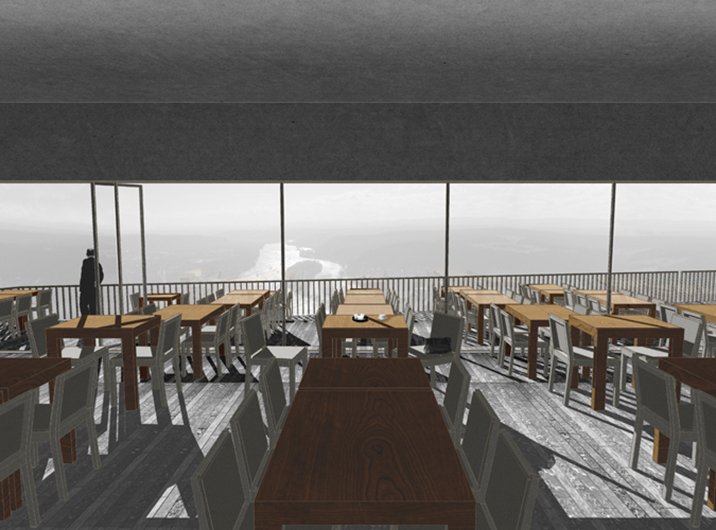
Restaurant
The main room and the external area are stepped towards the border of the mountain.
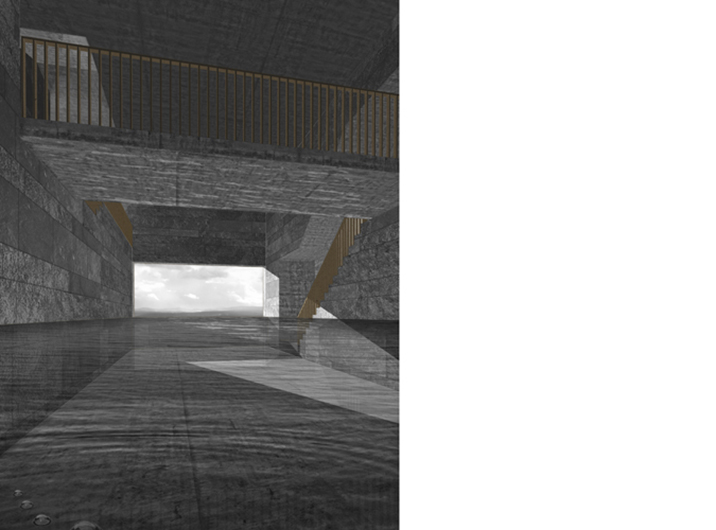
Rock bath
in form of a swimming pool, with staircase to the spa area.
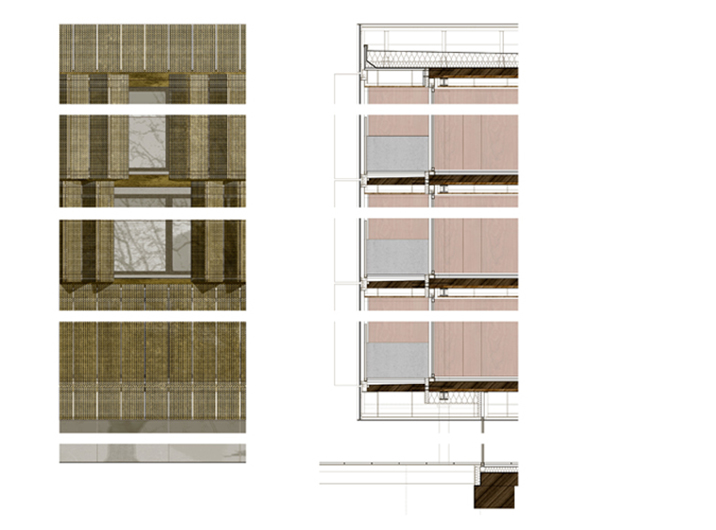
Facade and construction
The hotel body is drafted as a steel/armored concrete composite construction, a steel frame construction with holorib/armored concrete ceiling. The column grid is based on the guestroom’s floor plan.
The facade is made up out of different layers; behind the metal sheet lies in the area of the guestrooms the layer with the loggias and the bath tubs, on the roof the shell conceals the ventilation and the elevator installation, and on the bottom side of the hotel body space between contains the technical installations for the restaurant area in the ground floor.
The shell of the facade is planned to be made of anodized sheets of aluminium colored dark bronze, or of bronze directly. Different degrees of openess exist from fully closed, perforated, to open in the parts with the movable folding-and-shifting shutters.
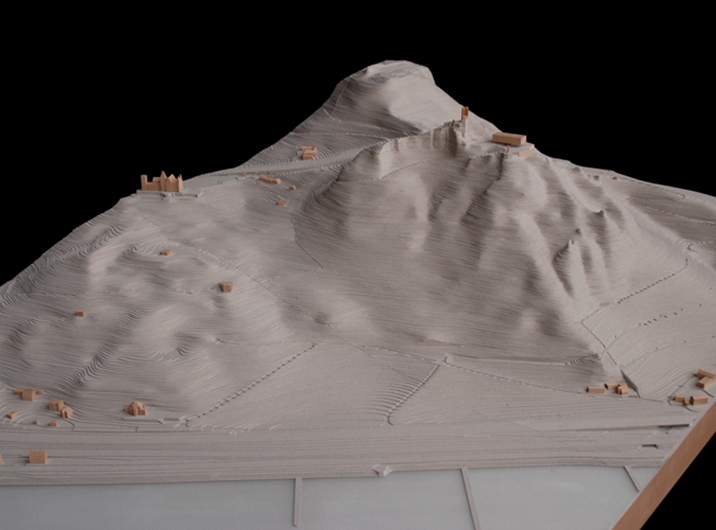
Situation model 1:1000
View from the west
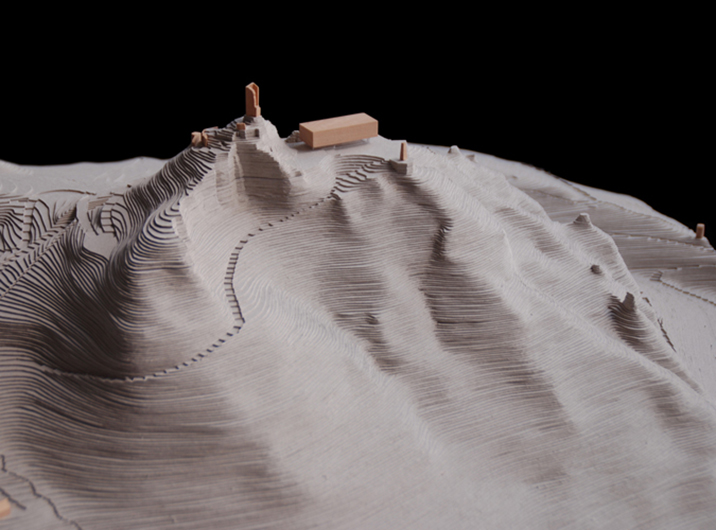
Situation model 1:1000
View from the north